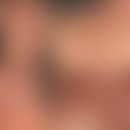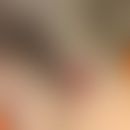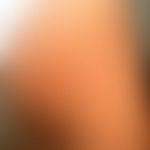HistoryThis section has been translated automatically.
Annessi et al. 1977
DefinitionThis section has been translated automatically.
Neutrophilic figural erythema (NFE) is a rare, benign, autoinflammatory entity. NFE is considered a variant of urticarial vasculitis of adulthood and belongs to the anular erythema group, which is mainly observed in infancy. Although it is preferentially an inflammatory dermatosis of the pediatric age group, cases in adults have also been reported.
You might also be interested in
Occurrence/EpidemiologyThis section has been translated automatically.
NFE is typically a disease of young children. Increasingly, cases in adulthood are also being described (Kuo YW et al. 2021). Recently, NFE has been described as a paradoxical certolizuzmab-induced skin reaction (Calabrese L et al. 2024).
EtiopathogenesisThis section has been translated automatically.
Mostly unknown; paradoxical skin reaction;
LocalizationThis section has been translated automatically.
Upper and lower extremities, face and chest region.
ClinicThis section has been translated automatically.
The term "neutrophilic figured erythema in childhood" - NFE - is histologically defined and characterized by a neutrophil-rich dermal infiltrate with nuclear dust. Differentiation from Sweet's syndrome is difficult as both diseases can have analogous histopathological substrates, even if NFE is more closely associated with leukocytoclastic vasculitis.
Clinically, neutrophilic figured erythema in children is characterized by asymptomatic or mildly pruritic, annular or circinate, red plaques with raised, firm, red borders and (coarse) lamellar scaling. Although the disease is self-limiting and no residual atrophy or scarring remains, cases with a chronic persistent course have been reported.
A variant of NFE is chronic recurrent annular neutrophilic dermatosis (CRAND). It was first described in 1989. CRAND is a rarely described form of neutrophilic dermatosis characterized by a ring-like and chronic course and histologic involvement similar to Sweet syndrome, but without common signs, biologic abnormalities, or underlying systemic pathology. It appears to affect adult women after the age of 40.
Differential diagnosisThis section has been translated automatically.
Deep variant of erythema anulare centrifugum. Histology is diagnostic. No leukocytoclasia. Age is rather unusual in childhood.
Tuberculoid leprosy: histology is diagnostic
Subacute cutaneous lupus erythematosus, which can often present with anular foci. Histo and immunohisto and ANA are diagnostic
Sweet syndrome: no evidence of leukocytoclastic vasculitis, unusual age.
Acute tinea due to Malassezia species: lack of fungal evidence. Missing source of infection.
Case report(s)This section has been translated automatically.
A two-year-old girl presented with a gradually spreading, circinate, elevated red plaque on the right leg that had been present for 7-10 days. The mother reported a primary red plaque with centrifugal growth. Ultimately, the ring-shaped structures had formed. There were no systemic complaints. The child was otherwise healthy. No medication was taken. The family history was unremarkable. Anamnestically, analogous skin symptoms were reported, which had healed without consequences after a few weeks under blanching local therapy. The current lesions appeared at new sites.
Clinic: partly annular, partly circulatory erythematous, raised, firm, non-sensitive plaques with a fine scaling of the surface. Systemic and general examinations showed normal results except for a slight pallor.
Histo: unremarkable epidermis, dense neutrophilic infiltrate throughout the dermis and around the vessels. Abundant nuclear dust. Histopathologic findings were consistent with leukocytoclastic vasculitis.
Laboratory: decreased hemoglobin (9.2 gm %), hypochromic and microcytic erythrocytes, elevated ESR. The other biochemical parameters were in the normal range. Antinuclear antibodies (Hep-2 cell line) as well as anti-Ro and anti-La were negative.
Therapy: oral prednisolone (1 mg/kg) for 5 days. Partial regression of the lesions. Continuation of oral prednisolone therapy for a further two weeks. Including complete regression of all lesions with slight hyperpigmentation. Reduction of prednisolone therapy over a further 2 weeks.
LiteratureThis section has been translated automatically.
- Annessi G et al (1997) Neutrophilic figurate erythema of infancy. Am J Dermatopathol 19:403-406.
- Calabrese L et al. (2024) Paradoxical skin reaction to certolizumab, an overlap of neutrophilic dermatoses. J Dtsch Dermatol Ges 22:438-441.
- Ghosh SK et al. (2012) Neutrophilic figurate erythema recurring on the same site in a middle aged healthy woman. Indian J Dermatol Vnerol Leprol 78:505-508.
Hamidi S et al. (2019) Neutrophilic figurate erythema of infancy: A diagnostic challenge. J Cutan Pathol 46:216-220.
- Kuo YW et al (2021) Pregnancy-associated neutrophilic figurate erythema. Indian J Dermatol Venereol Leprol 88:99-101.
- Maurelli M et al (2022) Uncommon Non-Infectious Annular Dermatoses. Indian J Dermatol 67:313.
- Ozdemir M et al (2008) Neutrophilic figurate erythema. Int J Dermatol 47:262-264.
- Patrizi A et al. (2008) Neutrophilic figurate erythema of infancy. Pediatr Dermatol 25:255-260.
- Saha A (2022) Neutrophilic Figurate Erythema- A Masquerading Presentation. Indian J Dermatol 67: 94.
- Trébol I et al (2007) Paraneoplastic neutrophilic figurate erythema. Br J Dermatol 156:396-398.
Wallach D et al. (2018) Pyoderma gangrenosum and Sweet syndrome: The prototypic neutrophilic dermatoses. Br J Dermatol 178, 595-602.
Incoming links (1)
Annular dermatoses;Outgoing links (6)
Certolizumab pegol; Erythema anulare centrifugum; Leprosy (overview); Lupus erythematosus subacute-cutaneous; Sweet syndrome; Tinea (overview);Disclaimer
Please ask your physician for a reliable diagnosis. This website is only meant as a reference.









